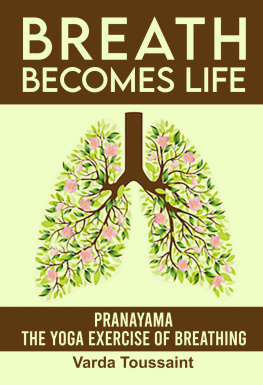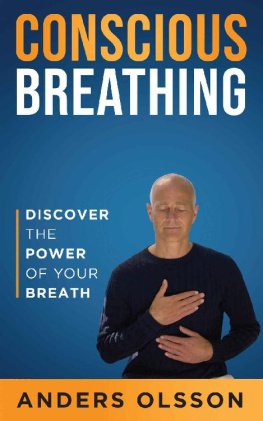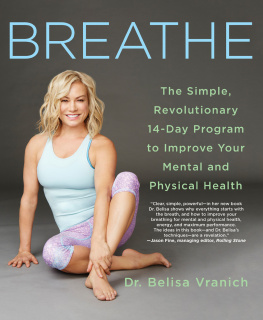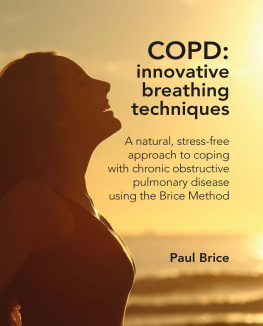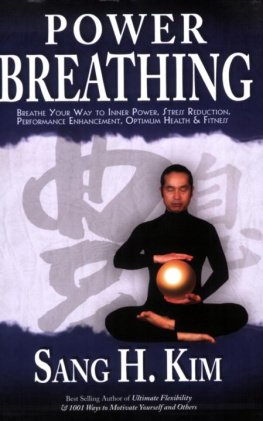Myofunctional Therapy Made Better:
Using the Pivotal Breathing Method to Take Your Breathing and Health in a New Direction
Karese Laguerre RDH, OM
2018
All rights reserved. No parts of this publication are to be reproduced, in any form or by any means without the expressed prior written permission from the author.
The author cannot be held responsible for any loss or claim arising from the use or misuse of the suggestions made within.
This book contains the clinical knowledge of the author, gained through education and experience, and is not intended as a substitute for the medical advice of physicians or other healthcare professionals. The reader should regularly consult a physician in matters relating to his/her health and particularly with respect to any symptoms that may require diagnosis or medical attention.
Introduction
You have made no mistake. I know exactly why you are here and how you may have gotten on this path. Myofunctional therapy was introduced to you by a trusted medical or dental professional and you are in the research phase. There is a wealth of information online about it, some that correlates and some that contradicts. Many of it from the same people who are within the field and equally invested in the benefits of a healthy airway.
This book should give you better insight into the field and provide you with all the knowledge the professionals in the field know about myofunctional therapy. Learning and using the Pivotal Breathing Method will not only benefit your understanding of what brought you here, but also provide you with a well-paved path to success.
In this book, you will get a full myofunctional therapy program that is self-guided and personally tested. My home used to be flooded with the things you may currently be struggling with: frequent congestion, chronic ear and throat infections, mouth breathing, crooked teeth (malocclusion), thumb-sucking, nail-biting, ADHD, and sleep apnea. Just name it and between my husband and four children, there was a revolving door of issues and temporary solutions. In full disclosure, the Pivotal Breathing Method was not the one fix trick for all those problems. Honestly, myofunctional therapy is not either. Both are great adjunctive treatments that when coupled with diet changes (not to be discussed in this book), dental/sleep appliances, allergy awareness and a clear airway, can transform your life and health.
Myofunctional therapy is not a profession, so the variation of myofunctional therapist out there and what letters follow their name or how they market themselves is purely optional. I am a dental hygienist that clinically practices both myofunctional therapy and dental hygiene. My story and experience with this therapy did not start with school. Which should be surprising since I went to the best school in New Jersey for dental hygiene. My first exposure was in working with a pediatric dentist who is deeply entrenched in airway education and treatment. She knew things about my kids and put puzzle pieces together that my pediatrician never could. It was only after seeing her, another myofunctional therapist, and my subsequent medical visits to doctors to test sleep/airway, that I was convinced. They all came to similar conclusions, despite their various methods. I took the advice that I felt would work best for me and my family, we implemented things rapidly, and change was gradual at first.
My next step was to save myself money. Treating the airway is expensive and possibly a privilege (I have a blog you could read about that view at http://bit.ly/airway ). I signed up to learn myofunctional therapy and after 4 days I was released out into the world knowing a lot and yet still not very much at all. I spent the next few weekends in other courses that had the same goal of nasal breathing but entirely different methods. The results from all were incredible and I was certain that myofunctional therapy was not a profession for one reason. It is too simple. If you can teach yourself to breathe through your nose with your tongue suctioned up to the roof of your mouth, you are myofunctional therapy gold. The internet has many of the exercises to strengthen the muscles to get you there, but no structure. The 4-day course was the structure and all that separated me from the YouTube students of the world.
Beyond that, it was too slow for my kids. I could not establish a solid routine with them while working so many hours. I began to incorporate other methods and alternative treatments into my program at work and in my home. There it was, all my suspicions confirmed. Myofunctional therapy is incomplete. Dynamic treatment plans that were personalized would work in as little as 10 weekly sessions for my clients.
Complexity and variety were essential in forming the Pivotal Breathing Method program. It took months of trial, error, and education. The success that stems from completion is replicable for most, but not for the complex cases. Those who suffer from genetic disorders, severe pain, unique illness, autism and severe forms of sleep apnea or apraxia of speech, may not see results. A specialized program with a therapist working 1-on-1 to diagnose and treat is best. Thus, this book may not be for you if you fall under any of those categories.
If you seek better sleeping, breathing, eating and health then enjoy the program! You can contact me at any time during your process with any questions or concerns by reaching out via email to .
The Science of Breathing
Nasal Breathing Benefits and Facial Development
Your nose is for breathing. It seems very basic but is true. Anatomy and physiology of the nares, or nasal passages, dictates that the primary function of the nose is to breathe. The is also the wonderful, and sometimes painful, ability to distinguish smells and scent, but it all goes back to that aroma reaching our senses by traveling to the nose through by way of air. The nose is designed to filter, warm and moisturize the air we breathe. I think of it as our bodys personal humidifier.
An obstruction in this function would cause a dysfunction or compensation of the body, resulting in predominant mouth breathing. The oral cavity was not meant to filter or moisturize the air, in fact, mouth breathing tends to remove natural moisture (saliva) from the mouth. Air inhaled through the mouth sends dry air with bacteria through the airway, often causing inflammation of the tonsils and frequent infection. Mouth breathing also leads to low tongue resting posture. Ideally, at rest, the tongue should be positioned up along the length of the hard palate.
Imagine a simple drawing of a house without a roof. It has a simple 3-line open rectangle shape. Two lines that meet at a point would complete the roof and create a pointed top, thus creating an almost pentagonal shape. Now imagine a simple drawing of a barn with a nice rounding that completes the roof. We want our palates to develop into a barn shape with the beautiful arched round roof for optimal development. Our dental arches should form a U shape. The tongue is the foundation for that development, the constant pressure on the arch facilitates growth around the tongue into that perfect U shape. Our tongue in that sense is the blueprint for palatal development and should fit in the palate without overlapping the teeth.
When the tongue is low in the mouth, we lose the foundation, and like the open rectangle house, without that round support the palate forms a narrow and almost pointed roof shape. It would create an A shape, narrow arch with a high palatal vault. Establishing proper tongue posture with good habits, early intervention or myofunctional therapy leads to proper oral development. A wide palate means a wide nasal floor with open passages and greater airway space. Ultimately reducing and/or eliminating the potential for sleep apnea, chronic infections, anxiety, asthma, and more.
Next page


